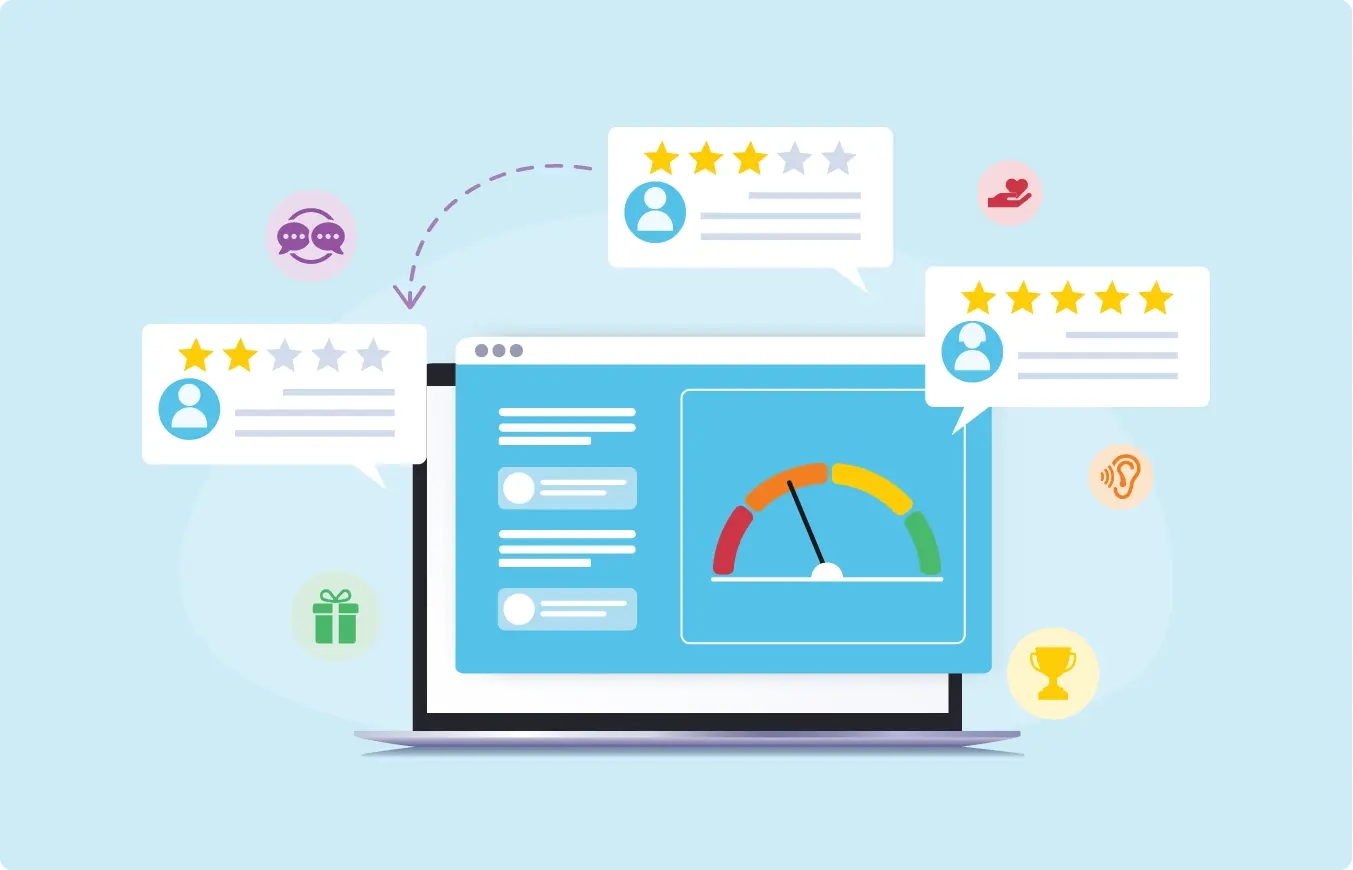The HR Leader’s Guide to Employee Recognition Programs

Time for leaders to step up! Motivosity can help.
Most recognition programs fall into one of these categories:
→ Company or executive-led recognition programs: The company recognizes specific employees for specific work (like an MVP award)
→ Manager-to-team recognition programs: Leaders recognize their direct reports for good work
→ Peer-to-peer recognition programs: Employees and leaders recognize their peers for good work
→ Manager-to-team recognition programs: Leaders recognize their direct reports for good work
→ Peer-to-peer recognition programs: Employees and leaders recognize their peers for good work
Recognition Programs Make a Big Impact—In a Lot of Ways!
Did you know? Recognition programs do more than boost employee motivation and productivity. They solve real business and people problems like disconnection, loneliness, and disengagement—all of which lead to higher turnover, poor employee reviews, high costs to the business, and lower innovation.
→ Nearly 40% of employees say that recognition is the best way to improve their engagement at work.
→ Employees with regular recognition say they’re more satisfied with their jobs.
→ Employees that participate in a formal recognition program stay longer reducing turnover by 31%.
→ Companies that implement a formal employee recognition program outperform their competition without a formal program.
→ Nearly 40% of employees say that recognition is the best way to improve their engagement at work.
→ Employees with regular recognition say they’re more satisfied with their jobs.
→ Employees that participate in a formal recognition program stay longer reducing turnover by 31%.
→ Companies that implement a formal employee recognition program outperform their competition without a formal program.
7 Types of Employee Recognition Programs
The Benefits:
✅ Easy to set up with a simple calendar notification
✅ Every employee gets recognized for some type of milestone and employees can anticipate it (and look forward to it)
✅ Plenty of milestones to choose from so employees get recognized with some consistency
✅ Every employee gets recognized for some type of milestone and employees can anticipate it (and look forward to it)
✅ Plenty of milestones to choose from so employees get recognized with some consistency
Common Mistakes:
❌ Without HR or other leadership oversight, it’s left in the hands of each individual manager
❌ Inconsistency is likely to happen if each manager is responsible for recognition
❌ Employees can feel forgotten or resentful if they’re missed or if their recognition is different than their peers
❌ Inconsistency is likely to happen if each manager is responsible for recognition
❌ Employees can feel forgotten or resentful if they’re missed or if their recognition is different than their peers
The Benefits:
✅ High-profile way to recognize employees who have done exceptional work, hit a significant achievement, or who represent your company�’s values
✅ A less expensive recognition option because only a few employees are recognized each year
✅ A less expensive recognition option because only a few employees are recognized each year
Common Mistakes:
❌ Collecting nominations can be an arduous, time-consuming process for employees and HR alike
❌ Employees may feel left out or like certain employees are favored (whether that’s true or not)
❌ Employees may feel left out or like certain employees are favored (whether that’s true or not)
The Benefits:
✅ Available to a broad group of employees—allowing the majority of team members to participate
✅ Motivates employees to complete a specific task or goal that likely benefits them and the business
✅ Motivates employees to complete a specific task or goal that likely benefits them and the business
Common Mistakes:
❌ An overemphasis on results could lead to employee burnout or unhealthy competition between peers or teams
❌ Could unintentionally exclude employees who deserve recognition for high-effort work that isn’t easily measured
❌ Could unintentionally exclude employees who deserve recognition for high-effort work that isn’t easily measured
The Benefits:
✅ Encourages everyday appreciation and acknowledgement of good work—both effort and accomplishments
✅ Includes everyone in the company and helps recognize work that might go unnoticed by leaders or managers
✅ Promotes a culture of gratitude that motivates everyone to look for ways to recognize their peers
✅ Includes everyone in the company and helps recognize work that might go unnoticed by leaders or managers
✅ Promotes a culture of gratitude that motivates everyone to look for ways to recognize their peers
Common Mistakes:
❌ Recognition could lose impact if it’s not surfaced in a public forum or reciprocated by everyone, both employees and leaders
❌ Without a formal program—with set dollars or points to give away—and an example to follow from other employees, some people may hesitate to participate
❌ Without a formal program—with set dollars or points to give away—and an example to follow from other employees, some people may hesitate to participate
The Benefits:
✅ Employees get recognized quickly for good work or above-and-beyond efforts that help the team or the business
✅ Leaders are empowered to act quickly and personalize recognition for the work they see worthy of acknowledgement
✅ Programs are often flexible enough to include every department or team and every type of role/type of work
✅ Leaders are empowered to act quickly and personalize recognition for the work they see worthy of acknowledgement
✅ Programs are often flexible enough to include every department or team and every type of role/type of work
Common Mistakes:
❌ Recognition could be inconsistent if it’s not tied to a specific rubric or scorecard, leaving people out that don’t showcase their work naturally
❌ Without a digital solution, managing and monitoring spot bonus allocations can be tedious and monotonous work
❌ Without a digital solution, managing and monitoring spot bonus allocations can be tedious and monotonous work
The Benefits:
✅ Employees have the opportunity to hear positive recognition directly from customers—helping them feel more fulfilled as they see their work influence the customer journey
✅ Adds an authentic, third-party to the recognition mix, often giving employees a greater sense of recognition and appreciation
✅ Adds an authentic, third-party to the recognition mix, often giving employees a greater sense of recognition and appreciation
Common Mistakes:
❌ Internal praise can be overlooked if the program only focuses on the few customers that take the time to reach out with positive praise
❌ Without a formal feedback program from customers, you may miss praise that could be helpful for employees to hear
❌ Work from more back-end employees may be overlooked as important with more customer-facing work elevated in customer feedback
❌ Without a formal feedback program from customers, you may miss praise that could be helpful for employees to hear
❌ Work from more back-end employees may be overlooked as important with more customer-facing work elevated in customer feedback
The Benefits:
✅ Employees are empowered to select the rewards they actually want (and they’ll actually use) instead of a pre-selected, static gift that someone in HR or a leader chose instead
✅ Every employee feels like rewards are personalized and tailored to their likes
✅ Every employee feels like rewards are personalized and tailored to their likes
Common Mistakes:
❌ A lack of communication about reward options can promote low participation from employees
❌ Without a strong connection to how employees can get recognized to receive the rewards (or how to use their rewards), employees can feel confused and frustrated
❌ Without a strong connection to how employees can get recognized to receive the rewards (or how to use their rewards), employees can feel confused and frustrated
How to Recognition Programs and Rewards Go Together?
Employee recognition without rewards is still a good first step. But the benefits of verbal and written praise can only go so far. Rewards add a tangible piece to the recognition, helping everyone see how valued the employee is by their peers, leaders, and the company.
How to Craft Your Employee Recognition Strategy
Step 1: Get clear on your workforce.
Step 2: Identify your main goal.
Step 3: Ask for employee feedback.
Step 4: Understand your budget.
Pro tip:
For some businesses, using a percentage of your revenue is a great way to allocate budget for recognition—even 1% can make a big difference. For others, segmenting the budget into rewards, software, and other expenses can help leadership buy in to the different needs of a full recognition program.
Step 5: Start simple with a milestone recognition program.
Step 6: Layer in spot bonuses, and nomination- and achievement-based awards.
Step 7: Add customer-driven shoutouts.
Step 8: Introduce peer-to-peer recognition.
→ Peer-to-peer recognition programs are 35.7% more likely to have a positive impact than manager only recognition.
→ Peer feedback can enhance employee performance by as much as 14%.
→ Peer feedback can enhance employee performance by as much as 14%.
